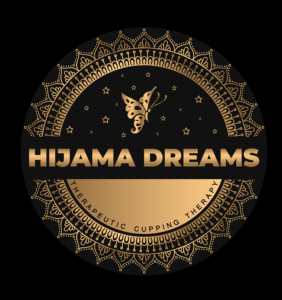Cupping therapy, more commonly known as “cupping” certainly came into the limelight recently after some Olympians and celebrities were photographed or shown on tv. However, this alternative therapy is not new; there is a very long history of cupping and it has remained an integral part of medicine for thousands of years.
With the passage of time and advancements in the world of medicine, cupping therapy evolved over time. Animal horns were slowly replaced by bamboo cups, which in due course were replaced with glass, metal or medical-grade silicone cups. However, the basic philosophy behind this ancient alternative healing practice remained the same, which is “to strengthen or activate the body’s natural self-healing powers, at times when they are not able to do so, on their own.” Cupping therapy involves creating a local suction on the skin by means of a mechanical device (hand or electrical pump) or heat (fire). The underlying skin is sucked or raised partway into the cup. As a result blood flow to the affected area is enhanced, which in turn activates the immune system, flushes the area, and stretches the tissue.
Brief History of Cupping
Cupping Therapy is a therapeutic, naturopathic, holistic treatment that originated from Egypt, the first documented medical text was found in 1550 BC. Vacuum therapy has been around for thousands of years. It is trending now thanks to many winning Olympians and celebrities. Hijama has then been adopted by many cultures including Egyptian, European, Greek, Native American, and Asian culture for centuries. American doctors carried cupping sets into the early 20th century. Hijama Cupping is a holistic form of preventative therapy that has no adverse side effects.
“Hijama” literally means “Suction” and could also be referred to as “Wet Cupping”. However the term “Hijama” is more technical and definitive. Hijama, when compared to wet cupping, emphasizes a healing combination of the soul and body. It refers to refined therapeutic standards that are not solely profit oriented. There is a growing body of evidence suggesting that cupping therapy remained an integral part of ancient medicine in one form or another. There are conflicting opinions regarding the pioneers of this ancient practice, some consider the Chinese to be the inventors of cupping, while the earliest pictographic records suggest that it is the ancient Egyptians who invented this technique.
The Egyptian Connection
The Ebers Papyrus – one of the oldest medical textbooks – mentions the use of cupping by the ancient Egyptians for treating various ailments such as menstrual imbalances, weakened appetite, fever, vertigo and pain. Moreover, drawings of cupping were also discovered on the Temple of Kom Ombo near Luxor. Kom Ombo is regarded as one of the most ancient cities of Egypt.
The Chinese Connection | History Of Cupping
In the Chinese tradition, the evidence of the use of cupping therapy can be traced back to the early Han Dynasty. Ge Hong – a famous herbalist and alchemist during the Jin Dynasty is considered the first to use this technique in China. He strongly believed that with “cupping and acupuncture combined, more than 1/2 of the ills can be cured”.
The Greek Connection | History Of Cupping
In ancient Greece, Hippocrates – a physician by profession and who is regarded as the father of modern medicine, used cupping therapy for treating internal disease and structural problems. Hippocrates recommended the use of cupping for treating ailments such as angina, menstrual irregularities and other disorder in his guide to clinical treatment.
The Western Connection | History Of Cupping
The practice of cupping spread to many European countries between the 14th and 17th centuries, particularly during the Renaissance era. It was regarded as the most popular treatment of arthritis and gout in Italy during this period. Throughout the 18th century, cupping therapy was practiced by a great majority of European doctors who used it for the treatment of common cold and chest infections. With the introduction of the newly established scientific model of medicine in the late 18th century, the popularity of cupping lessened.
New Interest in Cupping Therapy
In modern times, cupping re-emerged as a popular holistic treatment approach, thanks to a long list of celebrities who used it personally and to the vibrant media (particularly social media) who spread the news about this ancient alternative healing approach throughout the world. Moreover, with the increase in the popularity and demand of complementary and alternative therapies, more and more people are turning to holistic treatment options such as acupuncture, remedial massage, myotherapy reflexology, chiropractic, herbal medicine, and cupping. Today, cupping therapy is used to treat a wide variety of conditions, particularly those that cause muscle aches and pains.


